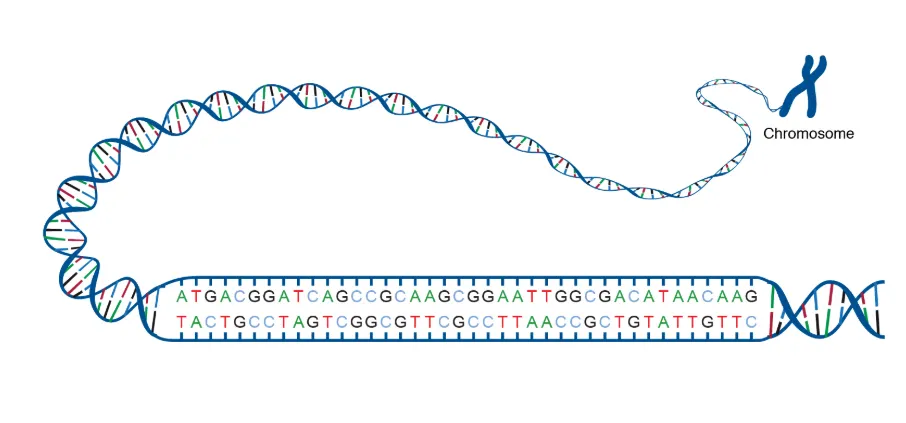In short
- Alfagenoma processes up to 1 million base pairs at the same time, making older models better than 46 of the 50 benchmarkts for regulating and variant forecast.
- Built with only 450 m parameters, the lightweight U-network transformer decodes the non-coding genome, making disease study and personalized medicine possible.
- The Google model is available for researchers via API, which indicates a new era of more open and accessible genomics.
Google DeepMind’s Alfagenomawhich was announced today is not just another entry into the AI-For-Science Arms Race. With API access available for non-commercial research and extensive documentation and community support hosted on Github– The signals that Genomics, once limited to specialized laboratories and affordable datasets, is quickly moving in the direction of open science.
This is a pretty big problem.
Imagine that your DNA is like a huge manual for how your body works. For a long time, scientists could only really understand the parts that your body have told directly how to build things, such as proteins. But the majority of your DNA – more than 90% of it – is not. It builds nothing immediately. People used to call it ‘junk -dna’.
Now we know that “junk” actually does something important: it helps check when and where the real instructions are used – a species such as a control panel full of switches and dials. The problem? It is really difficult to read and understand.
That is where alfagenoma enters.
Alfagenoma is a powerful AI model built by Google DeepMind that this confusing parts of DNA can read better than anything. It uses advanced machine learning (such as the species behind image generators or chatbots) to look at huge parts of DNA – up to a million letters long – and find out which parts are important, how they influence your genes, and even how mutations can lead to disease.
It’s a bit like having a super-slimme AI microscope that not only reads the manual, but also find out how the entire system switches on and off and what happens when things go wrong.
What is cool is that DeepMind shares this tool through an API (a way for computers to talk to it), so that scientists and medical researchers around the world can use it for free in their research. This means that it can help to accelerate discoveries in things like genetic diseases, personalized medicine and even anti-aging treatments.
In short: Alfagenoma helps scientists to read the parts of our DNA that we did not understand before – and that can change everything about how we treat diseases.
Alfagenoma is a deep learning model that is designed to analyze how DNA sequencies regulate gene expression and other critical functions. In contrast to older models that dissected short DNA fragments, alfagenoma sequences can process up to a million base pairs long – an unprecedented scale with which the distant regulatory interactions can record that have been missed by previous methods.
The nuclear strength of alfagenoma is the multimodal prediction engine. In contrast to earlier models that could predict one type of genomic activity, this model has high resolution for gene expression (RNA-SEQ, Cage), splitting events, chromatin files (including DNase sensitivity and histon modifications) and 3D chromatin contact cards.
This not only makes it useful to determine which genes are switched on or disabled in a cell, but also for understanding the complex choreography of genome folding, editing and accessibility.
The architecture is remarkable, but still quite well known if you have used stable diffusion or a normal open-source LLM locally: Alfagenoom uses a neural network inspired by U-net, with around 450 million trainable parameters.
Yes, that is quite low if you match even the weak and smaller language models that work with billions of parameters. Given that DNA, however, only treats 4 bases and only two pairs – at least the whole human genome is nothing but a combination of 3 billion pairs of AT and CG pairs of letters – it is a very specific model, designed to do one thing extremely well.

The model has a sequence encoder that downsamplates the import from a single base resolution to coarser representations, and then the transformer modell layers long-distance dependencies before the decoder reconstructs the outputs back to the level of one base. This makes predictions possible with different resolutions, making both fine -grained and broad regulatory analyzes possible.
The training of the model was based on a wide range of publicly available datasets, including code, GTEX, 4D Nucleome and Fantom5 – sources that jointly represent thousands of experimental profiles about human and mouse cells.
And this process was also fairly fast: with the help of the adjusted TPUs of Google, DeepMind completed the pre-training and distillation process in just four hours, using half of the calculation budget that its predecessor, andformer, enformer required.
Alfagenoma exceeded state-of-the-art models in 22 of the 24 sequence fortress tests and 24 of the 26 variant effect predictions, a rare clean sweep in benchmarks where incremental improvements are the norm. It does so well that it can compare and unimpeded DNA and can predict the impact of genetic variants in seconds – a critical tool for researchers who map the origin of the disease.
This is important because the non-coding genome contains much of the regulatory switches that control the cell function and the disease difference. Models such as alfagenoma reveal how much of human biology is governed by these rather opaque regions.
Ai’s influence on biology today is difficult to ignore. Take Ankh, a protein model developed by teams from the Technical University of Munich, Columbia University and the Startup Protinea. Ankh treats protein sequences such as language, generates new proteins and predicts their behavior – similar to how alfagenoma translates the regulatory “grammar” of DNA.
Another adjacent technology, the Genslms of Nvidia, shows the ability of AI to predict viral mutations and cluster genetic variants for pandemic research. In the meantime, the use of AI emphasizes to promote progress in chemical and gene-based anti-aging interventions, the intersection of genomics, machine learning and medicine.
One of the most important contributions of alfagenoma is its accessibility. Instead of being limited to commercial applications, the model is available through a public API for non-commercial research.
Although it is not yet fully open – what researchers cannot download and implement or change – the API and associated sources can generate predictions worldwide, adjust analyzes adjustments for different types or cell types and provide feedback to shape future releases. DeepMind has indicated plans for a wider open-source release along the line.
The ability of alfagenoma to analyze non-coding variants where most disease-linked mutations are found-ZOU can unlock a new concept of genetic disorders and rare diseases. The high-speed variant scoring also supports personalized medicine, where treatments are tailored to the unique DNA profile of an individual.
For now, the non-coding genome is less a black box and the role of AI in Genomics is only set to expand. Alfagenoma may not be the model to take us to Huxley’s “Brave New World”, but it is a clear sign of where things are going: more data, better predictions and a deeper understanding of how life works.
Generally intelligent Newsletter
A weekly AI trip told by Gen, a generative AI model.

